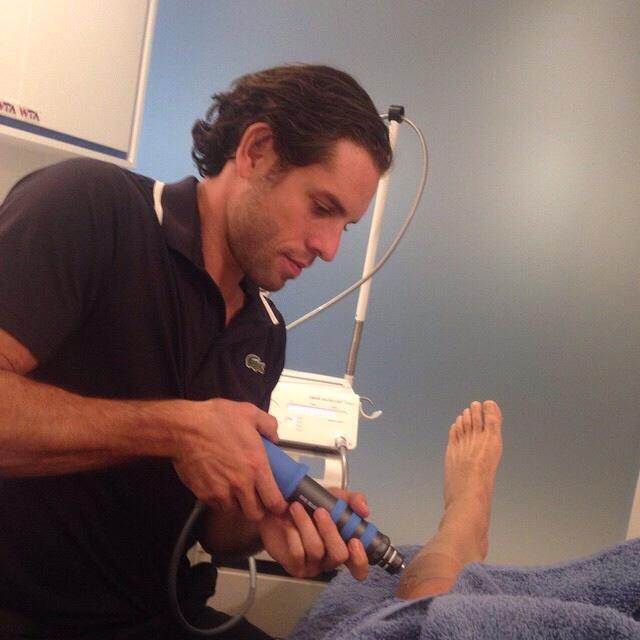Shockwaves are acoustic waves with an extremely high-energy peak like a sonic boom or a lightening strike. Shockwave therapy differs from ultrasound by its extremely large pressure amplitude. It was first used for the disintegration kidney stones and has now been modified to treat a variety of conditions.
It has been proven to be an effective and non-invasive method for the treatment of localised musculoskeletal pathology including: tennis and golfers elbow, heel spurs, plantar fasciitis, rotator cuff and other shoulder disorders, trigger points, lower back pain and a variety of chronic tendinopathies and many other problems. The benefits of shockwave therapy are: it is fast and effective to apply, drug free and relatively pain free and has no side effects.
Shockwave therapy works using a high-intensity sound wave that interacts with the tissues of the body, leading to beneficial effects such as neovascularisation (new blood vessel growth), reversal of chronic inflammation, stimulation of collagen and dissolution of calcium build-up. These mechanisms work on tissues in the following ways. Firstly, an increase in blood flow is necessary to start and maintain the repair process of the damaged tissue structure. New blood flow brings well-needed oxygen and nutrients to the damaged tissue, most notably mast cells. Mast cells act to facilitate the body’s inflammatory response and in turn halt chronic inflammation by providing a healing environment. Collagen is also stimulated, which is vital in the regenerative process of an injured tissue. As the injured tissues return to normal, functionality is restored and pain is relieved.
Each treatment usually lasts between 5-10 minutes and is used in conjunction with other manual therapy techniques. It is recommended that patients refrain from physical activity for up to 48 hours post shockwave therapy. Most do not report any post treatment soreness, however it is possible to have some residual pain for a few hours after.

